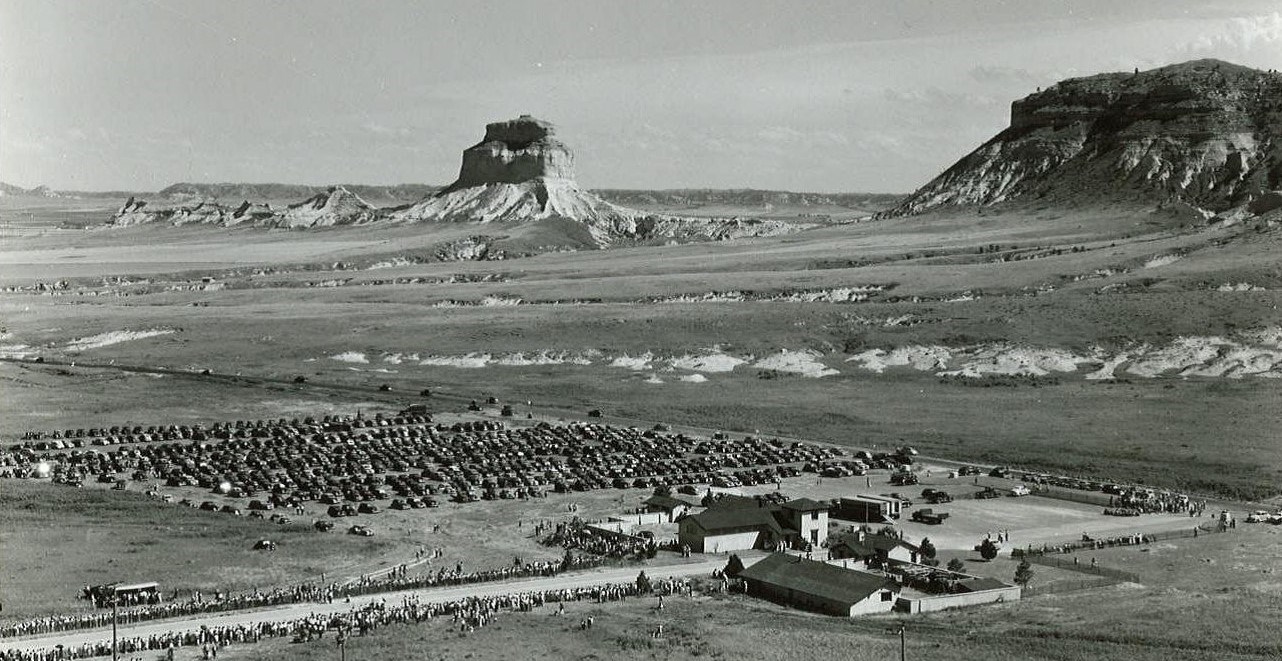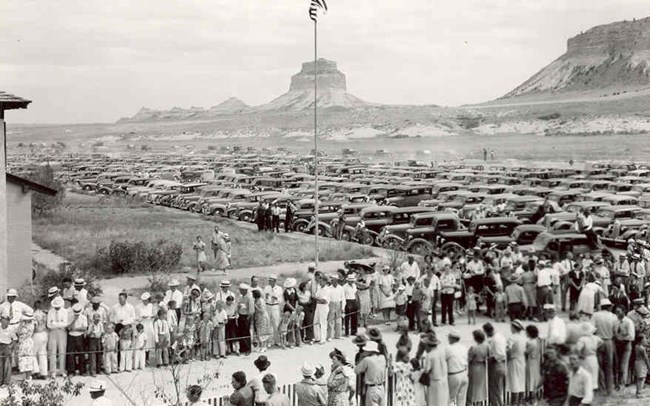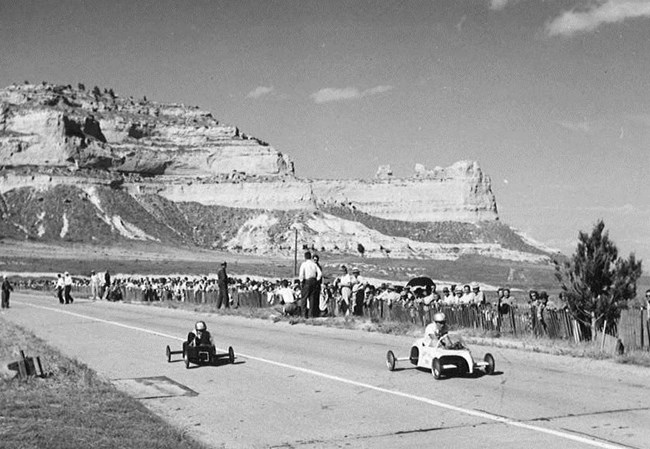Last updated: January 23, 2025
Article
Soap Box Derby at Scotts Bluff

NPS

NPS
First Soap Box Derby at Scotts Bluff
The first Soap Box Derby held at Scotts Bluff National Monument was in 1939. This unofficial event was held at the base of the monument each year from 1939 to 1951, except during World War II. For the 1939 derby, the parking area was filled with cars of an estimated 10,000 proud parents, relatives and friends. The horizon was black with cars swarming to find a parking place. The summit road was protected with snow fences and soon lined with spectators. The winner of the first Soap Box Derby at Scotts Bluff National Monument was Jack Lupher of Minatare, Nebraska. He defeated his cousin Bill Stephenson, also of Minatare.History of the National Soap Box Deby in Akron, Ohio
The Soap Box Derby is a youth car racing program which was started in Dayton, Ohio, in 1934 by a group of friends who constructed racing cars from scraps of lumber. In 1935, the race moved to Akron, Ohio. During the 1950’s and 1960’s the Soap Box Derby in Akron, Ohio drew up to 70,000 spectators. The current race includes both boys and girls and draws more than 500 entrants from 43 states and 3 countries. The World Championship finals are held each July at Derby Downs in Akron, Ohio. Cars competing in this and related events are unpowered, relying completely upon gravity to move.
NPS
Crowds
The first Soap Box Derby at Scotts Bluff National Monument reported approximately 10,000 people gathering to witness this regional running. There were approximately 12,000 people attending in 1940 and 7,500 in 1942. By 1951, the crowd had been reduced to approximately 850.
The Car
Some of the rules and specifications for the cars at the time derby races were held at Scotts Bluff were:- The driver had to build his own car, but could obtain the advice of adults in its construction.
- Cars competing in this and related events were unpowered, relying completely upon gravity to move.
- The car was built with a two-inch pine plank for the base, ply-wood sides and sheet aluminum on the top.
- The cars had to be 3 inches above the ground, with the driver in the car, and have a maximum length of 80 inches.
- The combined weight of the car and driver could not exceed 250 pounds.
- The limit that could be spent in building the car was $10.00.

NPS
The Track
At Scotts Bluff National Monument, the sloping, paved, Summit Road that leads north from the Visitor Center made a perfect course for the young speedsters. The racing distance was 1,050 feet, with a slope not exceeding 9%. The track was wide enough to give at least three racing lanes. The course should permit a regular passenger car to start from a standstill and coast over the finish line at a speed of slightly over 20 miles per hour. The time of the race was approximately 30 seconds.
NPS
The Race
The Soap Box Derby cars went through a preliminary inspection to allow the racers to make changes, if necessary, before the final inspection. After the final inspection, the first test run at Scotts Bluff National Monument would take place. After the test runs, the Summit Road would again be open for visitors. The cars had to pass the final inspection to be able to run in the race. Boys between 11 and 15 years on the day of the race were eligible to participate. The winner won a trophy and an expense-paid trip to Akron, Ohio, where he represented Scottsbluff in the Soap Box Derby Grand Championship Finals. This gave him a chance to compete for a four-year scholarship at the university of his choice.
NPS
